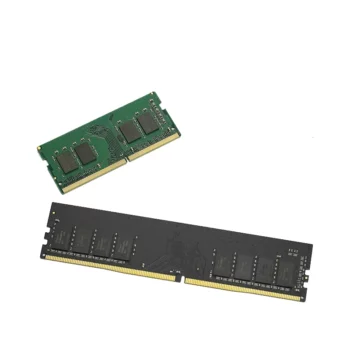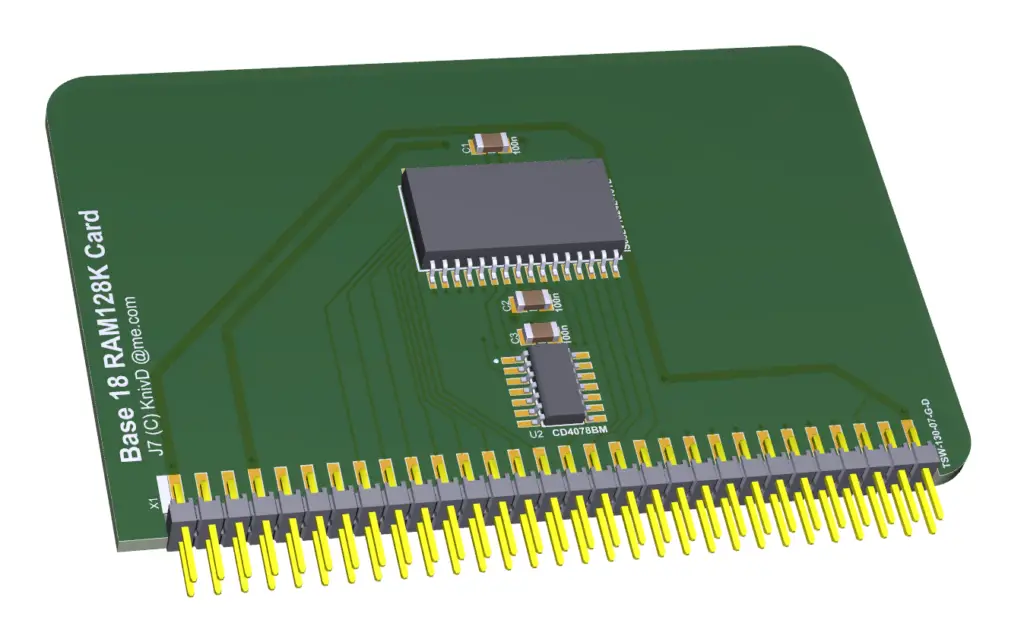Can We Use External RAM For Laptop?

Can We Use External RAM For Laptop?
Before we dive headfirst into the realm of External RAM, let’s take a moment to explore the fascinating world of RAM.
Can Laptops Use External RAM?

1. Understanding RAM:
- RAM stands for Random Access Memory.
- It functions as temporary data storage for a PC’s processor or other components, like video or sound cards.
2. Portability:
- RAM is not a portable or external device.
- Although physically transportable, it isn’t an active input/output mechanism.
3. Role in Laptops:
- RAM modules, typically known as SODIMM memory cards for laptops, attach to slots on the motherboard.
- They are not designed for external, on-the-go use.
4. Upgrading RAM:
- For those aiming to enhance laptop performance without buying a new device, adding RAM is a feasible solution.
- An added RAM ensures smoother laptop operations, which is vital for tasks requiring extensive computational work.
5. Laptop RAM Compatibility:
- Not all laptops have the same capacity or design for RAM upgrades.
- While many laptops allow for RAM expansion, others have limited or proprietary slots, complicating the addition.
Conclusion: You can augment the RAM in many laptops, but you can’t utilize RAM modules as external or portable devices.
Can We Use External RAM For Laptop?
Absolutely! The external RAM slot is your laptop’s golden ticket to boosted performance. Found on the motherboard, this slot lets you insert additional RAM. Why does this matter?
- Performance Boost: If your laptop drags or feels slow, it could scream for more RAM. By adding external RAM, you’re giving your laptop a new lease on life.
- Types of RAM: There’s PCI-E RAM tailored for high-end tasks like gaming and video editing. Need more? Options range from 2GB up to a whopping 64 GB.
- Generations: RAM isn’t just RAM. It evolves. From DDR2 to the faster DDR4, it’s essential to pick the right fit for your laptop.
Are all RAMs created equal? No. The external RAM best suited for you depends on your needs. Are you a multitasker with tons of tabs open? Or a gamer craving smoother gameplay.
There’s a catch: while external RAM can supercharge your laptop, it’s vital to choose wisely. The market’s brimming with choices. How do you pick the right one? Keep reading to find out.
How to Add External Memory to a Laptop?
Are you thinking of boosting your laptop’s storage? Adding external memory is your ticket! It’s not only cost-effective but also a simple DIY task. Here’s a beginner-friendly guide:
- Check Your Slot: Firstly, does your laptop have a SODIMM slot? Usually, it’s below the keyboard. Confused? Look for a RAM cover or consult your manual.
- Know Your Memory Type: It’s either SODIMM or DIMM. The key difference? SODIMMs lock into place. Unsure? The bottom label on your laptop might help.
- Quality Matters: Always opt for quality memory. Beware of too-good-to-be-true deals.
- Using External Card Readers: Great for transferring pics from your camera to your laptop. It is faster than a cable and conserves battery.
Now, diving deeper into external memory types:
- Flash Drives: Portable and come in sizes from 2GB to 512GB.
- GP Card/ SD Card: Also known as Memory Sticks, offering up to 512GB.
- SSD Drives: Double the performance and silent. Though costlier, they’re faster and more energy-efficient than HDDs.
But, with all these options, which external memory suits you best? Is there a one-size-fits-all? Eager to find out? Stick around.
What Is The External RAM Slot For PC?
Have you ever wondered about the external RAM slot on PCs? It’s been around for a while! These slots, connected via PCI slots, expand your PC’s memory. Interestingly, they mimic the functionality and specs of internal RAM.
Key Points:
- Specifications: Detailed in data sheets, internal and external RAM share identical pinout specs.
- Flexibility: While they resemble internal RAM in size, external RAM can be effortlessly swapped out.
Are you considering an upgrade? This could be the straightforward solution you’ve been seeking!
Understanding External RAM Slots and Their Types
1. Overview of External RAM Slots:
- These slots extend a PC’s memory.
- Located on the motherboard, they are connected through PCI slots.
2. Types:
- SODIMM (Small Outline DIMM): A compact version containing 168 pins, which directly mounts to the motherboard.
- SIPP (Single Inline Memory Module): Similar to DIMM but with a single set of contacts, it also typically has 168 pins.
- RIMM (Rambus Inline Memory Module): Comprising 240 pins, RIMM is compatible with SDRAM and DDR SDRAM. It contains a bridge chip to access the main memory.
3. Modern RAM Slot Types: DDR1, DDR2, DDR3, and DDR4, each with varying capacities, are the contemporary slots available.
4. External RAM for Laptops:
- Designed to boost processing speeds.
- Functions as temporary storage, assisting the CPU with data handling.
- Ensure the external RAM is compatible with your system.
5. RAM Essentials for Gaming Laptops:
- The latest laptops utilize Four-channel technology, outperforming previous dual/triple-channel tech.
- DDR4 RAM is currently the standard, replacing DDR3, allowing multitasking.
- For high-end gaming, a minimum of 16GB RAM is recommended.
- While buying or upgrading a gaming laptop, prioritize RAM capacity for optimal performance.
Conclusion:
External RAM isn’t just a fancy addition; it’s a necessity for many. Whether you’re a gamer craving better performance, a professional juggling multiple tasks, or a student aiming for efficiency, investing in external RAM is a wise choice. Before you move, remember to check your laptop RAM compatibility and dive into a realm of enhanced computing. Hungry for more insights? Stay tuned for our next piece!

